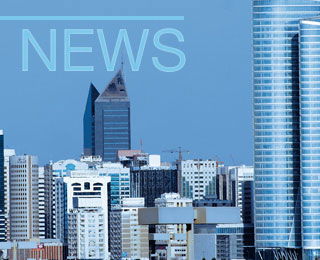Lafarge announced that its 1Q14 sales were down two per cent to EUR2633m (up nine per cent like-for-like YoY). EBITDA was stable at EUR343m and current operating income was up 14 per cent to EUR146m.
Bruno Lafont, Lafarge chairman and CEO, said: "Our first-quarter results confirmed the positive trends experienced at the end of last year. Our volumes were supported by continuing growth in emerging markets and the progressive improvement in several European markets. North America was affected by a harsh winter, but the underlying market trends are positive.
"Our outlook for the year is confirmed and we expect to see cement demand growth in our markets of between two to five per cent in 2014."
Cement volumes improved by 11 per cent in 1Q14 with growth in emerging markets and European countries. Negative exchange rates impacted on sales, but EBITDA increased 21 per cent with a particularly strong performance in the Middle East and Africa.
Cost reductions continued to be applied on the group and such measures generated EUR80m and EUR45m in the period under report, which leaves Lafarge on track to deliver its target of EUR600m target of savings in 2014.
Net income in 1Q13 was impacted by EUR45m on one-time gains on divestments and excluding these one-off returns 1Q14 net income improved by EUR30m. Lafarge received EUR348m in cash for divestments in the quarter, including the 20 per cent remaining stake in the gypsum partnership with Etex and Maryland aggregates assets (US).
Meanwhile, net debt at the end of March decreased EUR1.3bn compared to 1Q13, reflecting higher cash flows and the deleveraging actions taken by the group, says Lafarge. Free cash flows rose by 54 per cent, after reduced costs, optimised working capital and capital expenditures.
In addition, Mr Lafont said: "We remain fully focussed on achieving our objectives. We will generate more than EUR600m additional earnings through cost savings and innovation and aim at bringing our net debt below EUR9bn by the end of the year, applying the utmost capital allocation discipline. Thanks to our actions, the group is ideally positioned to take the next step of its development with our project to create LafargeHolcim, the most advanced group in building materials through a merger of equals. This project will sustainably generate superior value and new opportunities for our customers, our employees, local communities and our shareholders."
Cement volumes increased at constant scope in the quarter, supported by company innovations and solid trends in the Middle East/Africa region as well as improved conditions in most European countries and the start-up of the new plant in Rajasthan. Weather conditions were contrasted across the company's operating countries with mild weather conditions in most central and eastern European countries. However, North America and Russia suffered a particularly harsh winter while heavy rains in a few other regions, such as the western part of France or South Africa, impacted sales. It is worth noting that in North America, the underlying market trends are solid.
The aggregates and ready-mix volumes were up four per cent and down one per cent, respectively in the quarter. These product lines have a larger exposure to North America and have consequently been more affected by the prevailing weather conditions in this region.
"Consolidated sales were up nine per cent at constant scope and exchange rates, with the combination of higher volumes and increased prices across all product lines to address cost inflation. As expected, exchange rates impacted negatively our sales by -eight per cent in the first quarter (EUR-195m), reflecting the appreciation of the euro against several emerging currencies starting second half of 2013," according to the company's statement.
Investments totalled EUR238m for the quarter. Development investments amounted to EUR184m in the first quarter of 2014. It mainly included the completion of the Kaluga cement plant in Russia, which produced its first cement in April and investments in projects at Exshaw in Canada and Ravena in United States as well as a range of debottlenecking projects.
"Going forward, we plan to continue to selectively invest in our core geographies, notably in sub-Saharan Africa, where Lafarge has announced plans to increase capacity in the region by 10Mta over four years", the company added.

Power Cement reports positive 3Q and 9MFY24-25 results
Pakistan-based Power Cement Ltd posted PKR7.182bn (US$52.5m) in revenue for the quarter ended ...